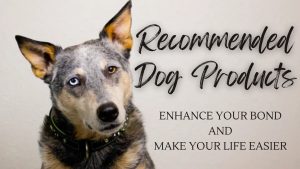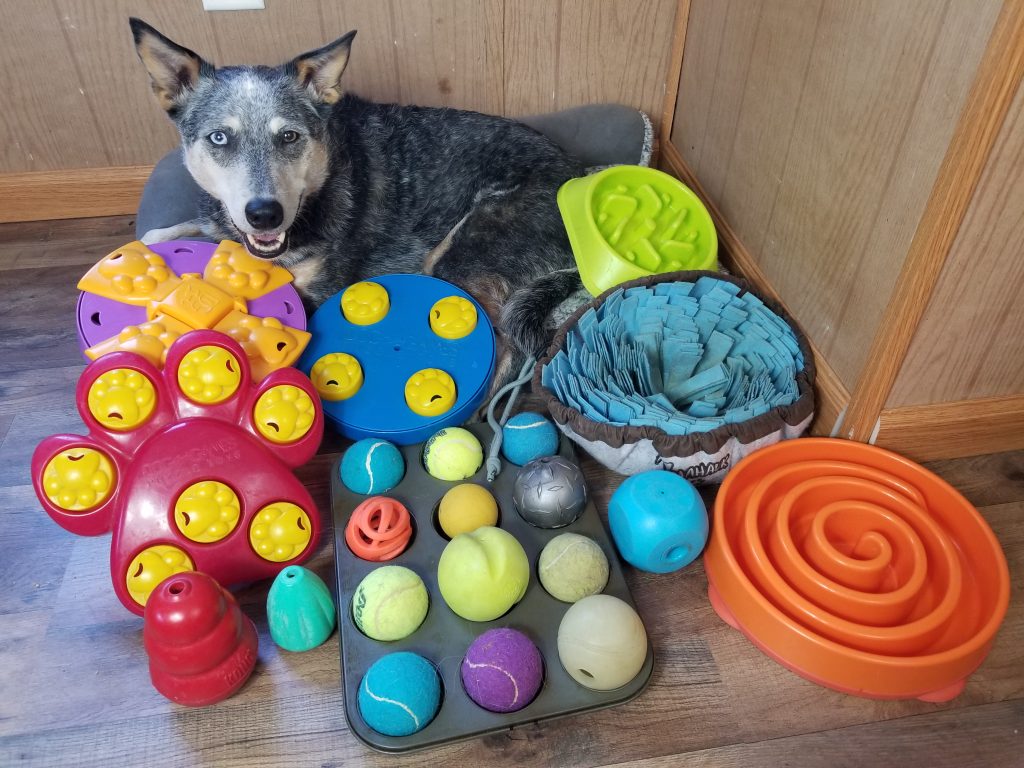Before we go any further in the Training Tips Tuesday Blog Hops, we want to touch base on something very important: changing the words we use can go a long way to changing our attitudes, mindset, and actions.
We created an infographic to emphasize the importance of the words that you use.

The infographic says “Training is something you do with your dogs, not to them.” People say they are going to train their dogs, but even in the words they use and the way they say it, there is no sense of the teamwork that training requires. Training is a two way street; it is a dance which requires a partner and mutual cooperation and communication.
You work with your dogs, play with them, train with them, live with them. You and your dogs are a team, and training is (as was mentioned above), in sense, a dance.
Here are a few more words we notice which create different mindsets:
Command
Cue
House Broken
House Trained
Command vs. Cue
We have noticed that command just sounds so unpleasant. When someone says to give your dog a command, they usually follow up with, “Make sure your dog obeys.” The dictionary definition of a command is, “to give (someone) an order : to tell (someone) to do something in a forceful and often official way” (Source). So a command should always be obeyed-without question or thought. Dogs are not robots-they are living breathing thinking beings.
When a person gives a dog a command like “Sit,” what usually happens after? The person pushes on the hind end and puts the dog into a sit. Surely the dog will understand that when it’s told to “Sit” and then the person pushes its butt onto the ground that that’s what the word means. More than likely, the dog will begin to understand that “Sit” means the person will put the dog into a certain position and then maybe give a treat after, so why should the dog perform the behavior by itself?
Now, the definition of a cue is, “a signal (as a word, phrase, or bit of stage business) to a performer to begin a specific speech or action” (Source). Ok, so now “Sit” means to the dog that it should put its butt on the ground and then it will be rewarded somehow-whether that’s a treat, a walk, going outside, petting, praise, or a toy. This dog will race to park its butt more than likely accompanied by a furiously wagging tail.
HouseBreaking vs. HouseTraining
Too often we’ve seen people note that their dog is “Housebroken.” Yet, people will note easily whether or not their dog is Cratetrained. Why is there such a difference? By changing the terminology from “breaking” and “broken” to “training” and “trained,” people may come to realize they have a different understanding and mindset of the process.
The terminology of cratetraining itself acknowledges that dogs must learn to accept the confinement. Living in a house with humans and learning where to eliminate is also a learning process. So why are we trying to “break” our dogs in the house instead of “train” them in where to go?
Just by changing this line of thinking, our training sessions are so much more fun and have become just that-a game. Training should be fun, and if it isn’t, we must be doing it wrong and we’ll gladly be wrong! What fun would it be if the person is stoic and demanding? Dogs want to interact and engage more with someone who is fun. Play is such a strong motivator and bonding element in a relationship too, so that’s another added bonus.
Just by changing the words that are used, our mindset and approach to training is different.
We’re not saying you have to change the words you use or your way of thinking (though if we do inspire you to do so, that is awesome!)-we are just sharing what works for us!
Now, you’re generally not going to find training how-tos, step-by-step guides on how to teach your dog something on our blog (we tried writing one of these posts here, and we don’t think this is really for us!-though you can check out Kyra Sundance’s books to find trick how-tos and you can check out Zak George’s videos which address common behavior problems. Interested on learning about positive reinforcement and clicker training? Karen Pyror’s website is a great resource). We will share resources that we find useful or informative. And we will post tricks that we learn, but probably not a how-to on the trick.
Why not you might ask?
One reason is because there is already plenty of this type of resource available in abundance.
The other reason is because the beautiful thing is that each dog in unique.
Each dog is an individual, just like each person is an individual So each dog learns differently, and has a different learning curve compared to another dog even in the same family or the same breed group. Bella learns differently than Terra who also learns differently than Kronos.
However, we will be sharing our revelations in relation to training and the human-canine bond as we discover them ourselves.
We are on a journey together, and the human learns a lot (probably much more) from the dogs and the dogs learn from the human. We are all students; and we are all teachers.
Can you think of any other words which create a different mindset in relation to our animals? Please share in the comments-we’d love to read your thoughts!
Also, don’t forget to link up and join our Blog Hop with your Hosts DOGthusiast and Tiffany’s Diamond Dogs.
Live Life to the Fullest,




